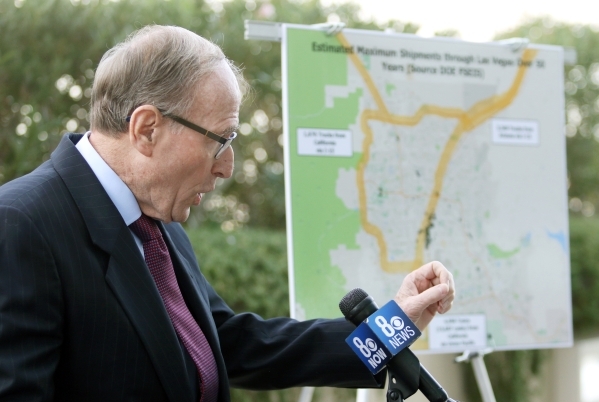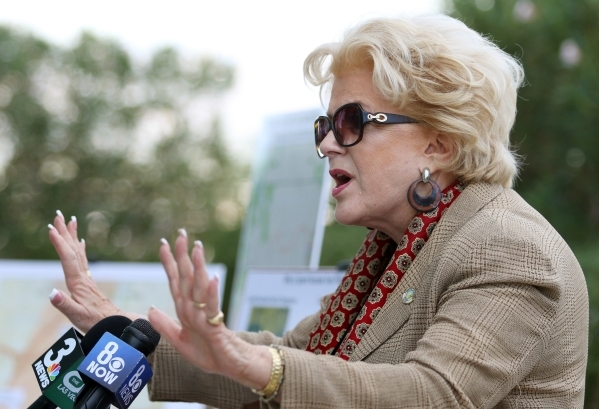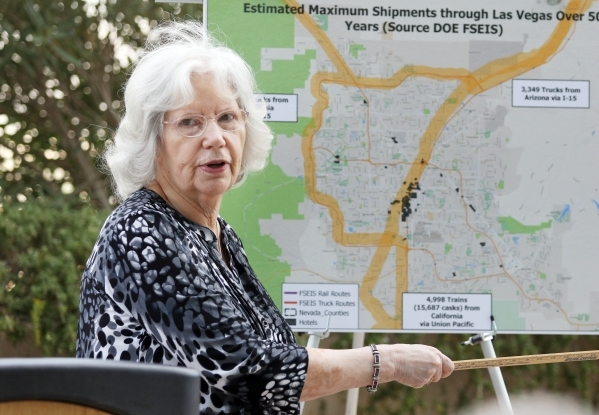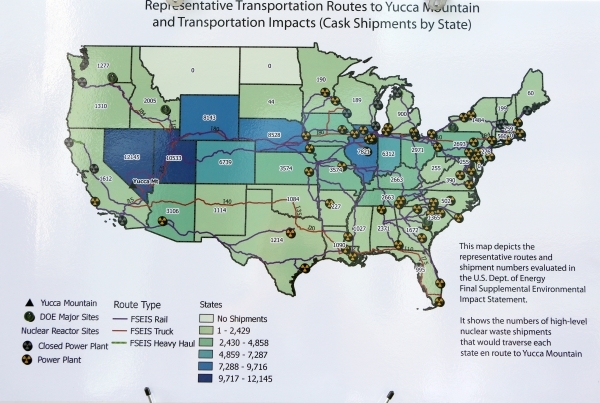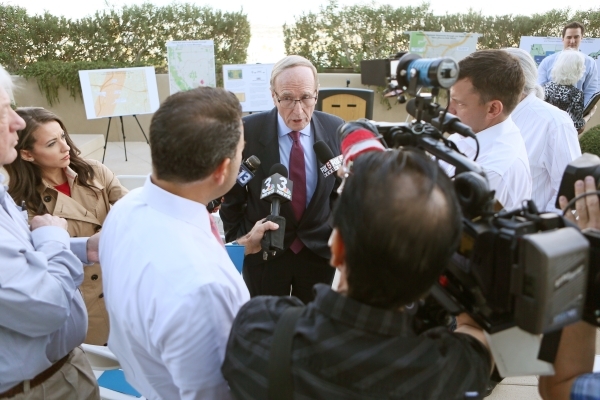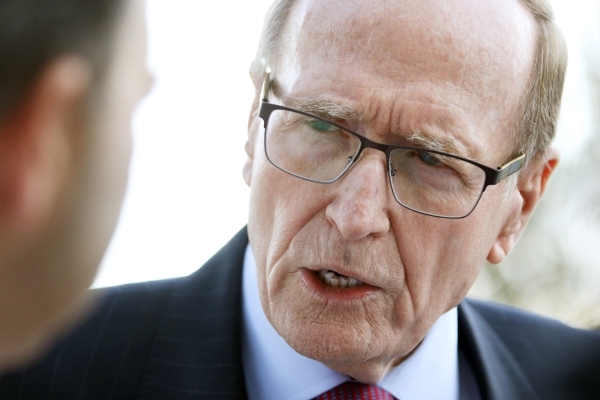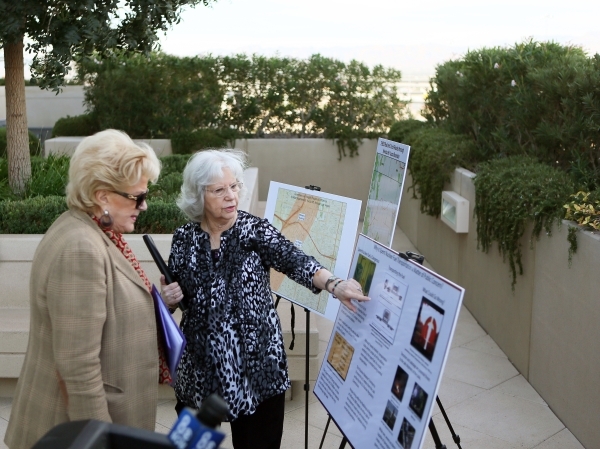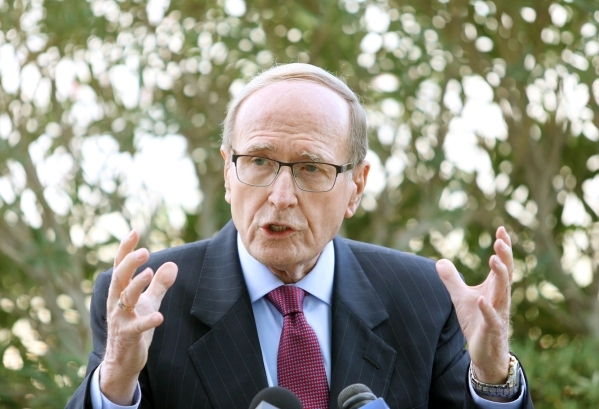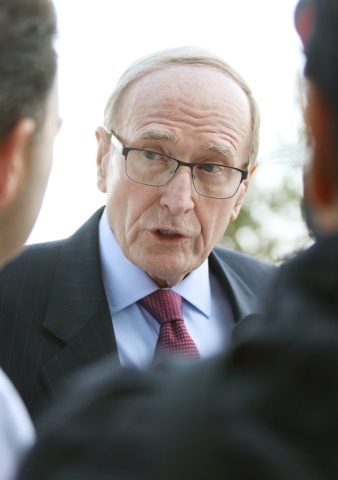Dump blasts feed concerns about Yucca Mountain
Yucca Mountain Project opponent Richard Bryan said Tuesday he was "stunned" when he watched a video of small explosions that followed more powerful ones Oct. 18 at a low-level nuclear waste dump near Beatty.
He said explosions and fire at the now-closed, state-owned landfill at the US Ecology site that shut down a 140-mile stretch of U.S. Highway 95 for nearly 24 hours added to his concerns for federal plans to haul 77,000 tons of spent nuclear fuel assemblies and high-level waste to Yucca Mountain, 100 miles northwest of Las Vegas.
"We've already got kind of a glimmer of what can happen with low-level. ... This stuff is highly dangerous," Bryan, chairman of the Nevada Commission on Nuclear Projects, said following one of 70 press conferences held at cities nationwide on nuclear waste transportation.
As of Tuesday, investigators still had not released the cause of the blasts nor the material that burned or ended up on the ground nearby, although preliminary test indicated there was no radiation problem on the surface.
The simultaneous press conferences organized by the nonprofit Nuclear Information and Resource Service — a networking center based in Takoma Park, Md., for people concerned about nuclear power and radioactive waste — had been planned before the soil cap of Trench No. 14 at the dump, 10 miles south of Beatty, exploded after heavy rains. Beatty is about 117 miles northwest of Las Vegas.
Bryan seized the opportunity, though, to draw a parallel.
"I thought to myself, if that's possible with low-level. This is the stuff that's supposed to be marginally dangerous, not to worry. We open a trench and put it in there. I was stunned. And the fact that you've now got to block the major highway between Las Vegas and Reno. Imagine if that blockage was between Las Vegas and Los Angeles," he said.
"Would that have had an impact that could be devastating to a community?" asked Bryan, a former governor and U.S. senator.
Bryan, for the press conference, shared a balcony at the Molasky Building overlooking the Spaghetti Bowl with Las Vegas Mayor Carolyn Goodman and Judy Treichel, executive director of Nevada Nuclear Waste Task Force.
A preliminary state fire marshal's report on the Oct. 18 Beatty incident says US Ecology General Manager Bob Marchand took the video that state officials later released to the Las Vegas Review-Journal.
Marchand and a security officer heard "sounds of bangs," then saw smoke "coming from a fenced area labeled Radioactive Materials. They also observed debris ejecting out of the crater fifty to sixty feet into the air. This occurred for several hours," according to the report by officer Martin Azevedo. Several damaged 55-gallon drums were found around the crater and two were outside the fence.
Tim Judson, executive director of the Nuclear Information and Resource Service, said the timing of nationwide press conferences coincided with release of new maps that show population centers plotted by the center's researchers along "representative routes" that the Department of Energy has proposed for hauling nuclear waste to Yucca Mountain by trains and trucks.
In addition, he said there has been increased motivation in Congress to rejuvenate the funding-starved Yucca Mountain Project that the Obama administration abandoned in 2010 to explore alternatives for nuclear waste disposal.
Fred Dilger, a Nevada consultant, said there has been a recent "drive among pro-nuclear folks to dismiss transportation risks. We think they have to do a lot better to move this safely."
The Nuclear Information and Resource Service estimates more than 10 million people will be exposed to small doses of radiation along transportation routes that would involve 2,800 rail shipments and 2,700 truck shipments.
Contact Keith Rogers at krogers@reviewjournal.com or 702-383-0308. Find him on Twitter: @KeithRogers2



